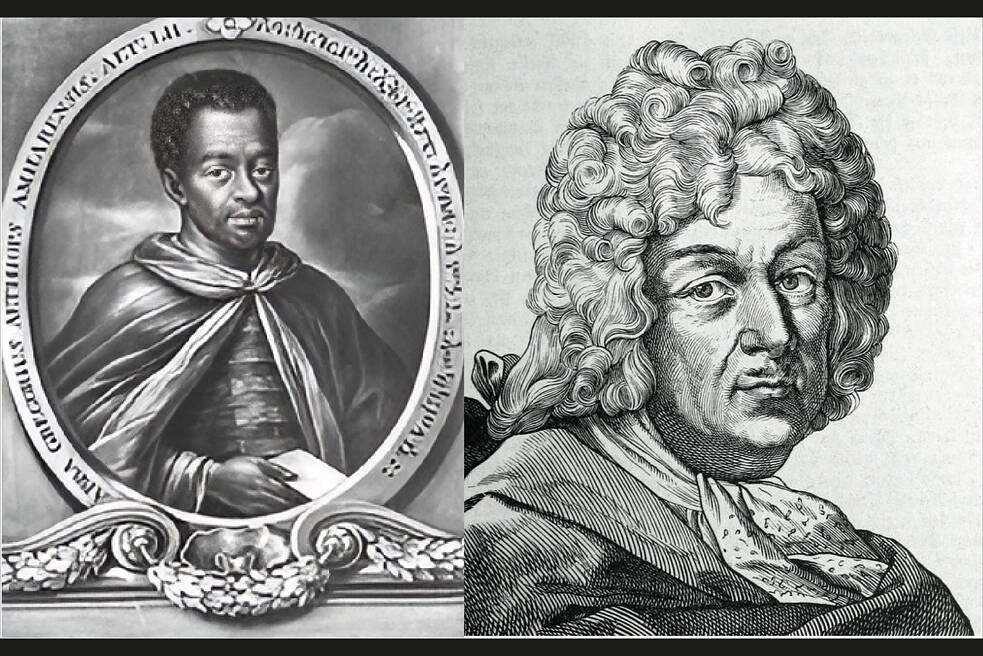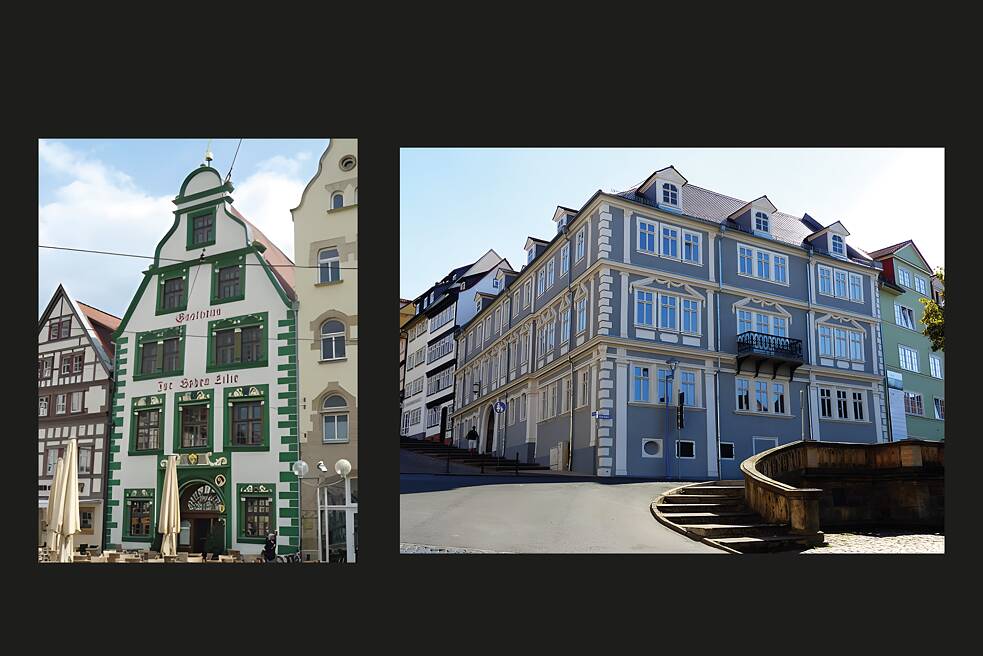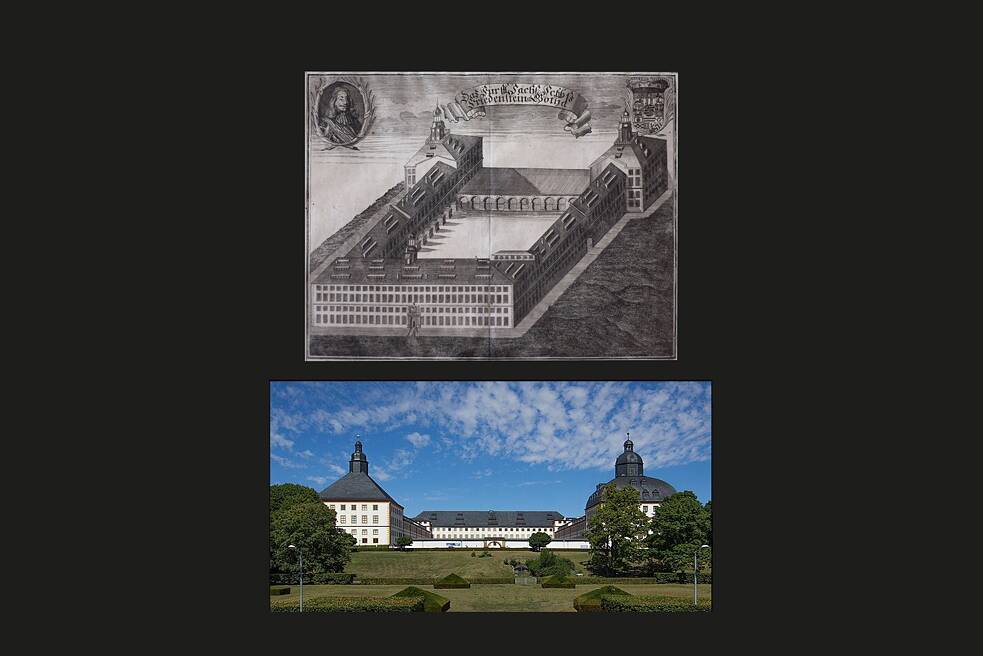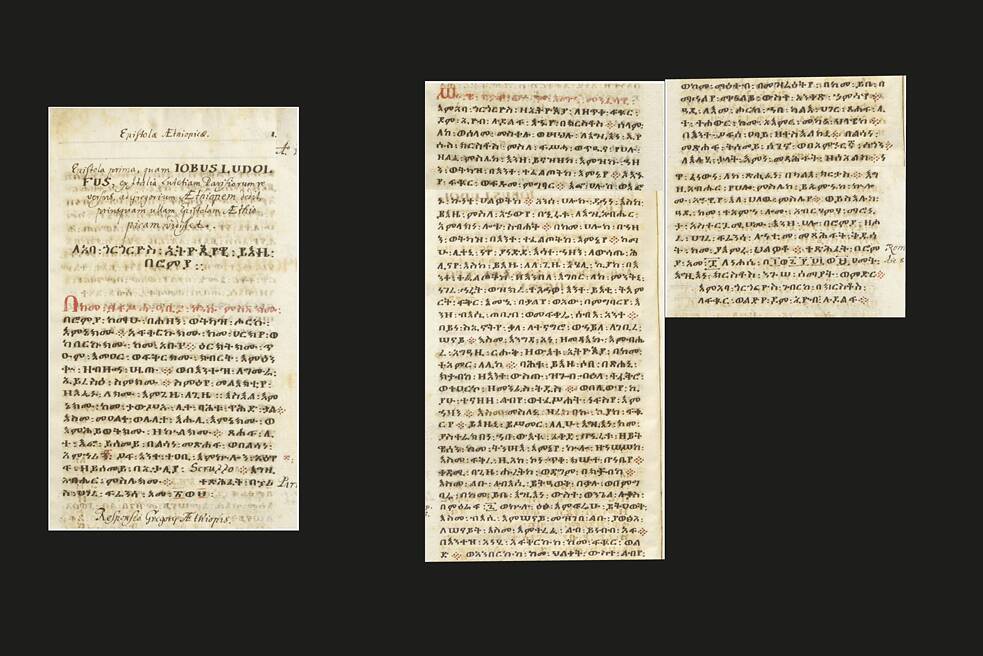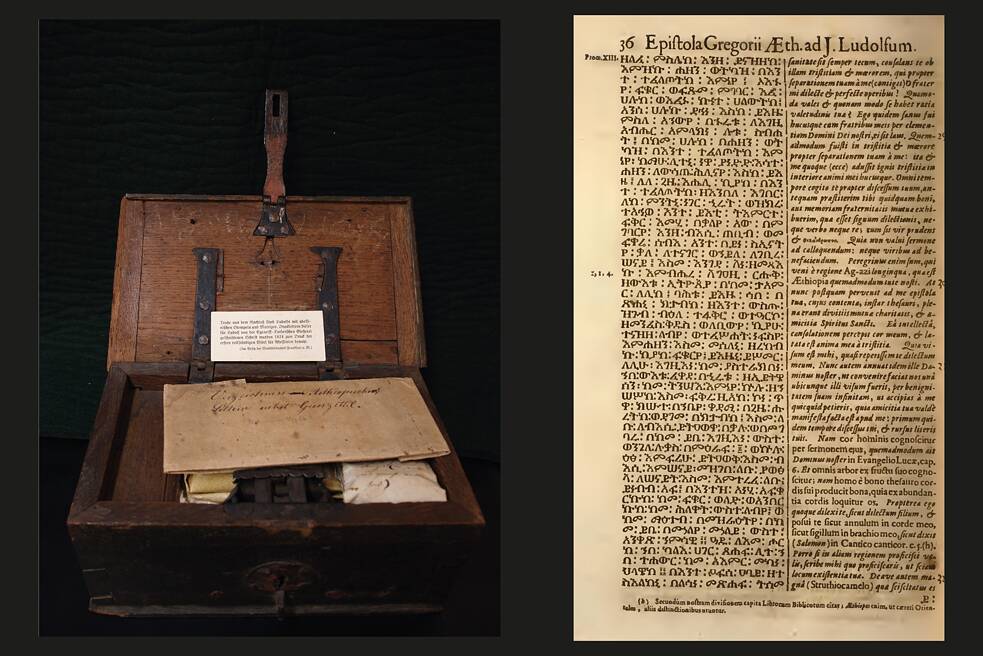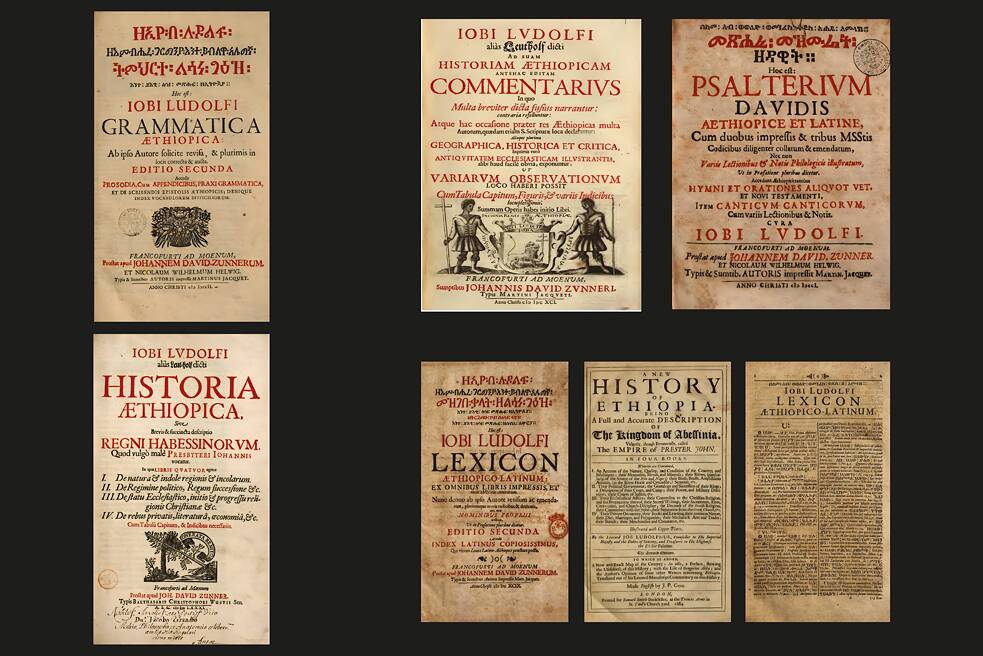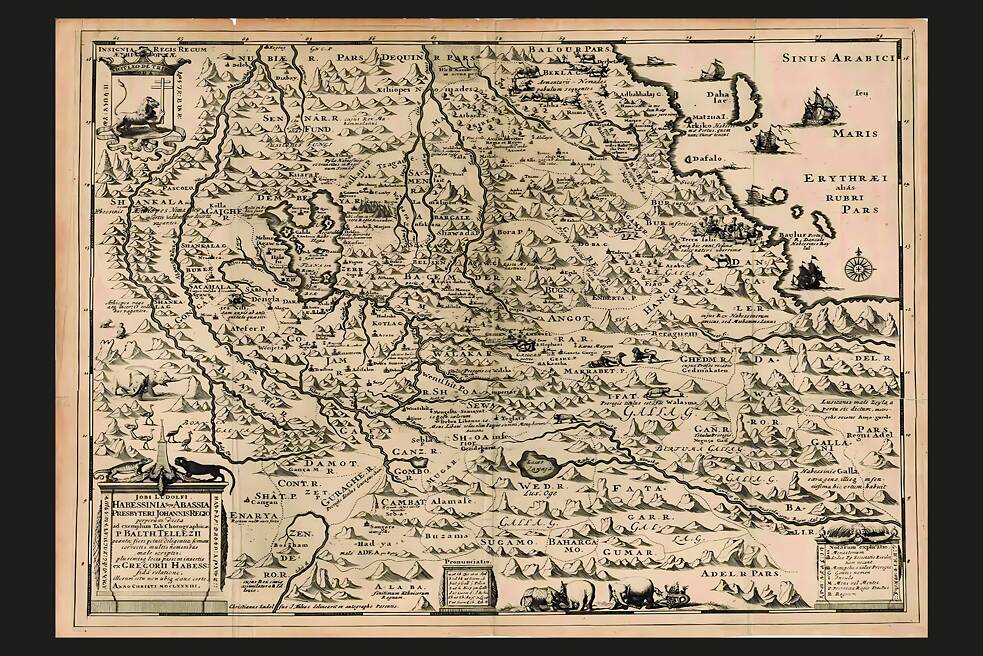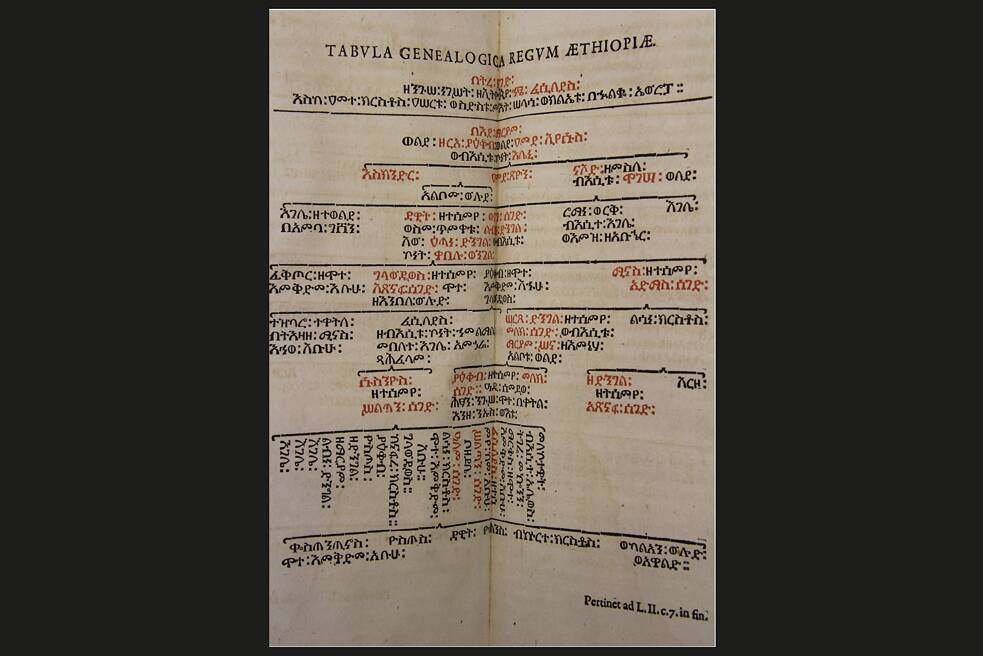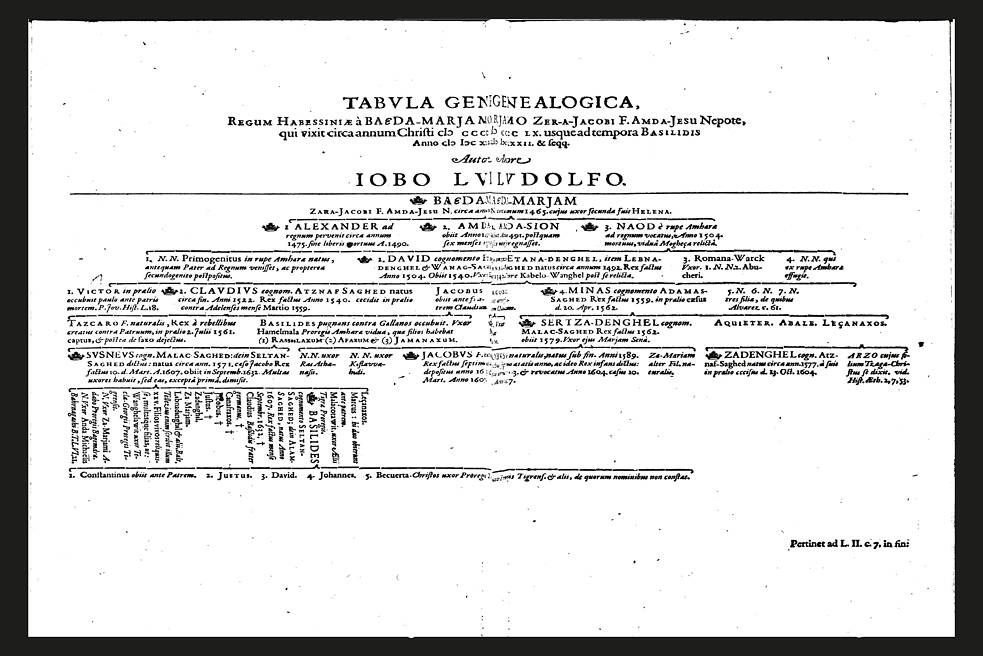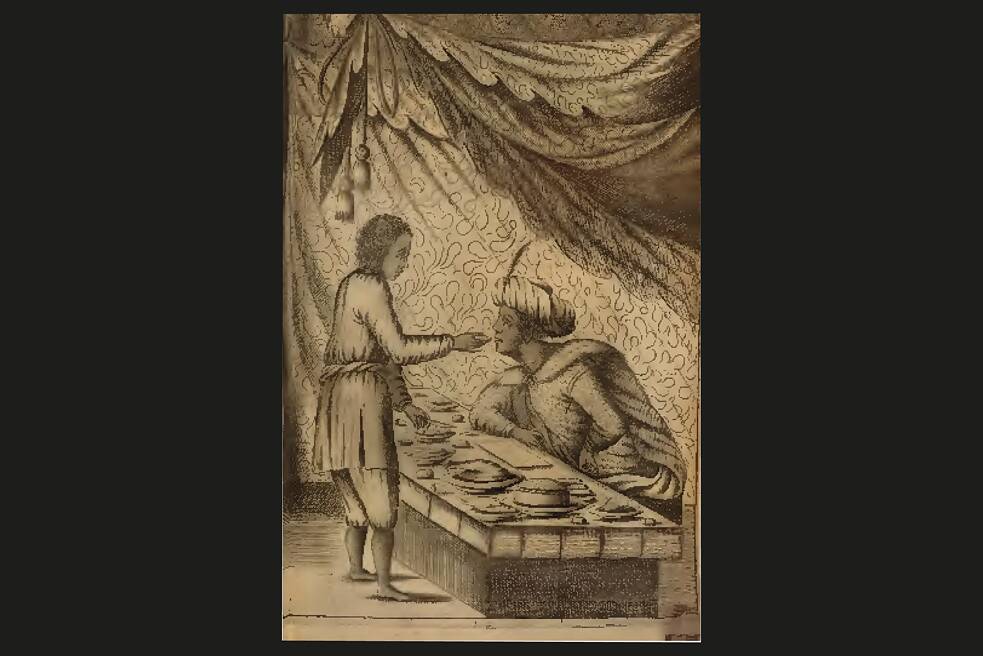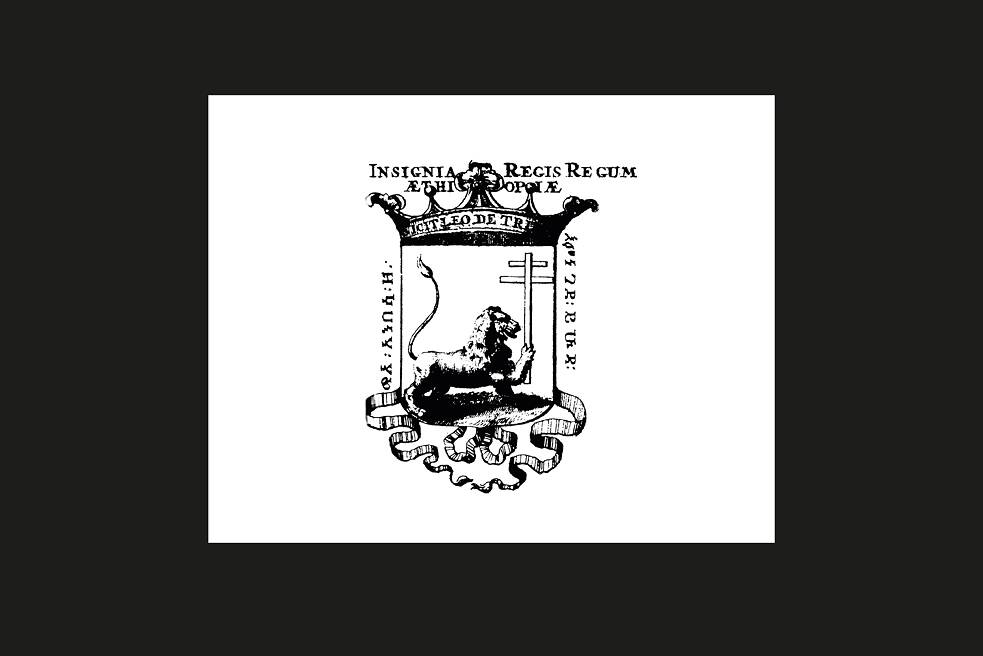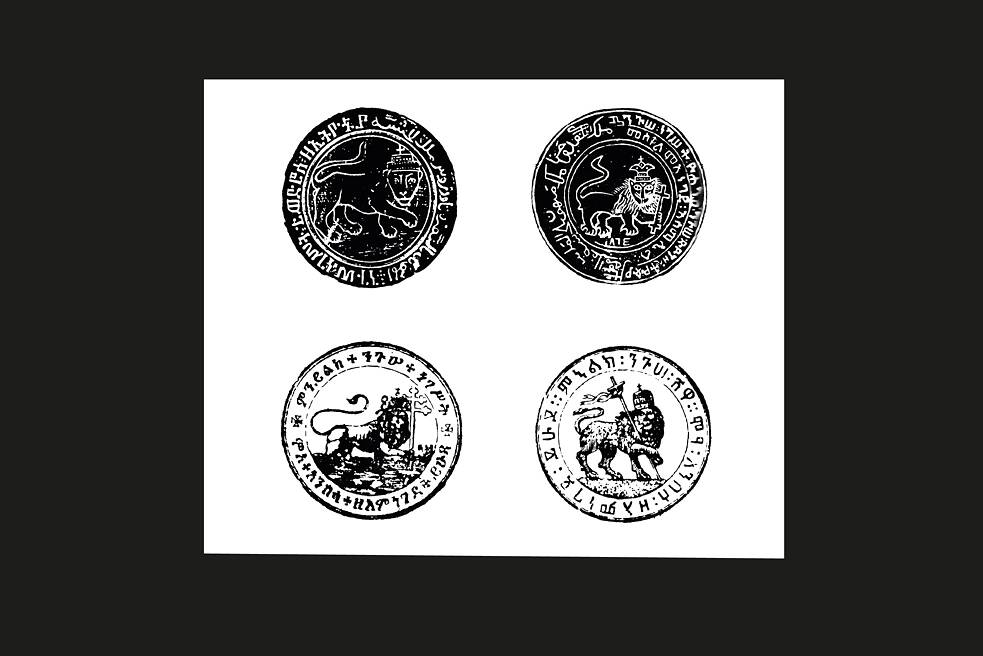Introduction to exhibition
This exhibition was organized to serve as a visual aid to those who were interested in the 400th anniversary of the birth of Hiob Ludolf (1624-1704).
To the extent that it was possible, we have assembled the following engravings, paintings and photographs connected with the life and work of Ludolf as well as with that of his companion, Abba Gorgoryos (c.1590-1658). These images fall into various thematic groupings.
In the exhibition are included the well-known portraits of Ludolf and Gorgoryos and a short but interesting text written with the hand of the Ethiopian monk in which he enjoins the faithful to thank God. At the end of the text, he declares his identity, “Gorgoryos the Ethiopian”. The viewer is encouraged to have a close look at this piece in which the author declares that he is “Ethiopian” and the old shape of the Ethiopic letter “p”. We suggest that it would be good to view this text together with the two letters we have reproduced from the extensive correspondence (in Ge’ez language) of the two scholars. In these two letters, it is asserted that the monk is “Ethiopian” or “from Ethiopia”. In other ways, too, the two letters are very interesting pieces to present day viewers.
Furthermore, a focus is given to the coat of arms that Ludolf designed, and which evolved to become the most ubiquitous emblem of the Ethiopian state, particularly from the beginning of the reign of Menilek (1865) to that of the outbreak of the first revolution (1974). The first phase is to follow how the design evolved by looking at the symbol stuck in the top left-hand corner of the map drafted with the help of Gorgoryos and on which the African scholar wrote down the toponyms in Ethiopic letters, a fact that makes the map a precious heritage item for Africans. The second map, on which the emblem is also stuck, displays a further change in the design until we come to the final shape, which is presented for the first time in the famous work that was published in 1683. The viewer is asked to notice the cross – what is widely called the Cross of Lorraine. We encourage viewers to see all the three cartographic works together for a better appreciation of the evolution.
When did this design make its way into Ethiopia. It is not possible at this stage of our knowledge to give an answer to this question. All we can say is that in 1752, a Czeck Catholic missionary, who was in Gondar at the time, was asked to draw a seal for the royal court. He brought into his sketch the lion from the time of the Jesuits and Ludolf (16th and 17th centuries), but it was different from the depiction of the animal by the German scholar. After that, we see a reproduction of the same conception – with some modification - in the medallion that was prepared by an Ethiopian lord for Salt, an English traveler, in 1805. Again, one sees an evolution in the drawing. The impact of the Ludolf design becomes more and more visible in the middle of the 19th century during the reigns of the three impactful emperors of the country – Tewodros (1855-1868), Yohannes (1872-1889), and Menilek (1865-1878 as King of Kings; 1878-1889, as King of Shewa; 1889-1913, as King of Kings). Where the influence is direct is in the first seal of Menilek; the Cross of Lorraine – a Catholic cross for a passionately Orthodox monarch - is a very powerful giveaway, not to mention the depiction of the lion, which was the same as that of Ludolf. After this, the slightly modified emblem (the Cross of Lorraine is replaced by a cross suitable to Ethiopia) becomes quickly a very ubiquitous coat of arms of the state.
The exhibition has displayed other images too as the viewer can see from this post.
In the course of the preparation of this exhibition, we have gotten the generous help of Professor Dr. Martin Mulsow, director of the Gotha Research Center, University of Erfurt. A good number of the photographs came from his collection. We thank him very much for that.
The physical exhibition which is still running at Goethe-Institut Äthiopien features two additional exhibits.
400th anniversary of Hiob Ludolf
Abba Gorgoryos (1595 - 1658)
Hiob Ludolf (1624 - 1704)
Research area
Abba Daniel Assefa
Prof. Shiferaw Bekele
Prof. Sebsebe Demissew
Short Bio of the researchers
A glimpse into the symposium
Introduction to exhibition

